Text
Conquering Selenium Automation Testing Challenges: A Roadmap to Success
Automated testing has become an indispensable component of software development, ensuring the quality, reliability, and efficiency of web applications. Amidst the plethora of available tools, Selenium emerges as a powerhouse for automation testing, empowering QA engineers and developers globally. Yet, mastering Selenium presents its set of hurdles, often leaving testers feeling overwhelmed and daunted by its intricacies. In this comprehensive guide, we embark on a journey to unravel the common obstacles encountered in Selenium automation testing and offer pragmatic strategies and solutions to surmount them. Whether you're a novice navigating the testing landscape or a seasoned tester seeking to refine your skills, this guide aspires to equip you with the requisite knowledge and techniques to navigate the complex terrain of Selenium automation testing successfully. For those yearning for personalized guidance and immersive learning experiences, enrolling in a Selenium course in Bangalore could be the catalyst to accelerate your learning journey and conquer Selenium's challenges with expert mentorship.

Grasping the Core of Selenium:
Before delving into the intricacies of Selenium automation testing, it is paramount to establish a firm grasp of its fundamental concepts and components. Selenium WebDriver serves as the bedrock of Selenium, facilitating interaction with web browsers and enabling testers to automate web application testing across diverse browsers and platforms. Comprehending concepts such as locators, page objects, and automation frameworks lays the groundwork for crafting resilient and efficient automation scripts.
Overcoming the Learning Curve:
Embarking on the Selenium journey often entails confronting the steep learning curve inherent to the framework. The plethora of features and functionalities inherent in Selenium can be daunting for beginners, necessitating significant time and effort investments to assimilate effectively. To overcome this barrier, consider enrolling in structured Selenium training programs like Selenium Online Training, offering hands-on experiences and expert guidance to expedite your learning curve.
Addressing Web Application Complexity:
Modern web applications are intricate entities characterized by dynamic user interfaces, evolving elements, and sophisticated behaviors. Navigating through this complexity demands testers to ensure comprehensive test coverage while preserving test stability and reliability. Strategies such as deploying robust test automation frameworks, leveraging page object models, and prioritizing test scenarios based on risk can empower testers to effectively tackle the challenges posed by complex web applications.
Enhancing Programming Proficiency:
Selenium automation testing necessitates proficiency in programming languages such as Java, Python, C#, or JavaScript, alongside a deep understanding of web technologies like HTML, CSS, and XPath. Testers must hone their technical prowess to craft, maintain, and debug automation scripts proficiently. Devoting time to refine programming skills through practice, tutorials, and online resources can significantly augment proficiency in Selenium automation testing.
Mitigating Maintenance Challenges:
As web applications evolve and undergo revisions, automation scripts built with Selenium may necessitate periodic updates and maintenance to remain pertinent and effective. Testers must establish robust maintenance strategies encompassing version control, modular test design, and continuous integration to streamline the maintenance process and ensure the durability of automation scripts. Additionally, staying abreast of the latest developments in Selenium and automation best practices through continuous learning is imperative for overcoming maintenance challenges effectively.
Simplifying Environment Setup and Configuration:
Configuring Selenium for automation testing involves orchestrating web browsers, drivers, dependencies, and integrating with development environments or continuous integration pipelines. Managing these configurations across diverse platforms and environments can be arduous, often culminating in setup and configuration intricacies hindering the testing process. Leveraging tools such as Docker containers, configuration management systems, and infrastructure as code can streamline environment setup and configuration, minimizing manual intervention and mitigating the likelihood of configuration errors.

Implementing Robust Debugging Techniques:
Identifying and rectifying issues in Selenium automation scripts can be formidable, particularly when grappling with intermittent failures, timing discrepancies, or intricate web elements. Testers must cultivate proficiency in debugging and troubleshooting techniques, encompassing logging, assertion statements, and browser developer tools, to diagnose and rectify issues adeptly. Leveraging Selenium's built-in debugging capabilities, such as breakpoints and step-by-step execution, can aid testers in pinpointing the root cause of failures and effectuating targeted remediation.
Exploring Alternative Testing Approaches:
While Selenium excels in web application testing, it may not be the optimal choice for testing other application types like desktop or mobile applications. Testers must explore alternative testing approaches and tools such as Appium for mobile automation or desktop application-specific tools to ensure comprehensive test coverage across diverse application domains. Moreover, considering factors like platform compatibility, device fragmentation, and testing requisites is pivotal in selecting the appropriate testing approach for non-web applications.
Conclusion:
Conquering the challenges inherent in Selenium automation testing necessitates a blend of technical acumen, strategic foresight, and continuous learning. By comprehending the fundamentals of Selenium, navigating web application complexities, honing programming proficiency, mitigating maintenance challenges, simplifying environment setup, implementing robust debugging techniques, and exploring alternative testing approaches, testers can traverse the intricate landscape of Selenium automation testing adeptly. Enrolling in structured Selenium training programs such as a Selenium Course in Bangalore can furnish the guidance and support required to surmount these challenges and embark on a gratifying journey towards Selenium mastery. With steadfast dedication, relentless perseverance, and a proactive approach to learning and development, testers can harness the full potential of Selenium and deliver superior software products efficiently and effectively.
0 notes
Text
Unlocking the Secrets of Selenium: Overcoming Automation Testing Challenges
In the realm of software development, the importance of robust and efficient testing methodologies cannot be overstated. As applications become increasingly complex and diverse, manual testing alone is no longer sufficient to ensure quality and reliability. Automation testing has emerged as a critical component of the software development lifecycle, offering numerous advantages in terms of efficiency, repeatability, and accuracy. Among the various automation testing tools available, Selenium stands out as a powerful and versatile option. From grappling with complex programming concepts to unraveling the intricacies of web technologies, learners face daunting obstacles on their path to mastering Selenium. Nonetheless, by enrolling in a comprehensive Selenium Course in Bangalore, aspiring testers can conquer these challenges and acquire hands-on experience for real-world scenarios. In this blog post, we'll delve into the secrets of Selenium and explore how it can help overcome automation testing challenges, enabling teams to deliver high-quality software products with confidence.

Understanding the Role of Selenium in Automation Testing
Selenium is an open-source automation testing framework widely used for web application testing. It provides a suite of tools and libraries for automating web browsers, enabling testers to simulate user interactions and verify application behavior across different browsers and platforms. Selenium supports various programming languages, including Java, Python, C#, and JavaScript, making it accessible to a wide range of developers and testers. With its rich set of features and robust capabilities, Selenium has become the de facto standard for web automation testing.
Overcoming Automation Testing Challenges with Selenium
1. Cross-Browser Compatibility Testing:
One of the significant challenges in web application testing is ensuring compatibility across different browsers and platforms. Selenium addresses this challenge by allowing testers to write scripts that can be executed on various browsers, including Chrome, Firefox, Safari, and Internet Explorer. With Selenium's cross-browser testing capabilities, teams can verify application functionality and performance across different environments, ensuring a consistent user experience for all users.
2. Handling Dynamic Web Elements:
Dynamic web elements, such as pop-ups, dropdowns, and AJAX-based content, pose challenges for automation testing. Selenium provides robust mechanisms for handling dynamic elements, including explicit and implicit waits, JavaScript execution, and advanced locators such as XPath and CSS selectors. By leveraging Selenium's powerful features, testers can effectively interact with dynamic elements and ensure accurate test execution in dynamic web applications.
3. Test Scalability and Maintainability:
As test suites grow in size and complexity, scalability and maintainability become critical concerns in automation testing. Selenium offers several features to address these challenges, including test automation frameworks such as TestNG and JUnit, which provide capabilities for test organization, parameterization, and parallel execution. Additionally, Selenium WebDriver's modular architecture facilitates code reuse and maintainability, allowing testers to create scalable and maintainable automation test suites.
4. Integration with Continuous Integration (CI) Pipelines:
Integrating automation tests into CI pipelines is essential for ensuring rapid feedback and continuous improvement in the software development process. Selenium seamlessly integrates with popular CI tools such as Jenkins, TeamCity, and Travis CI, enabling automated test execution as part of the CI/CD workflow. By incorporating Selenium tests into CI pipelines, teams can detect and address issues early in the development cycle, improving overall software quality and accelerating time-to-market.

5. Effective Reporting and Analysis:
Comprehensive reporting and analysis are vital for deriving actionable insights from automation tests and identifying areas for improvement. Selenium offers built-in capabilities for generating test reports using frameworks such as TestNG and JUnit, providing detailed information on test execution results, including pass/fail statuses, execution times, and error messages. Additionally, Selenium integrates seamlessly with third-party reporting tools and test management platforms, enabling teams to track test coverage, monitor trends, and make data-driven decisions to enhance test effectiveness.
Best Practices for Selenium Automation Testing Success
1. Designing Robust Test Cases:
Prioritize test case design and ensure that tests are well-structured, maintainable, and cover critical application functionality. Use techniques such as test case prioritization, boundary value analysis, and equivalence partitioning to maximize test coverage and effectiveness.
2. Implementing Page Object Model (POM):
Adopt the Page Object Model (POM) design pattern to enhance test maintainability and reusability. By encapsulating web page elements and interactions within page objects, teams can create more modular and maintainable automation tests that are easier to maintain and refactor.
3. Continuous Learning and Improvement:
Stay updated on Selenium best practices, new features, and emerging trends in automation testing by enrolling in Selenium Online Training. Invest in continuous learning and professional development to enhance your skills and expertise in Selenium automation testing, ensuring that your team remains at the forefront of industry advancements.
4. Leveraging Test Automation Frameworks:
Utilize test automation frameworks such as TestNG, JUnit, and Cucumber to streamline test development, execution, and reporting. These frameworks provide essential features for organizing tests, managing test data, and generating detailed test reports, enabling teams to optimize their automation testing workflows.
5. Embracing Continuous Integration (CI):
Integrate Selenium tests into CI pipelines to automate test execution and ensure rapid feedback on code changes. By incorporating automation tests into CI workflows, teams can detect defects early, facilitate collaboration among team members, and accelerate the delivery of high-quality software products.
Conclusion
In conclusion, Selenium is a powerful and versatile automation testing framework that empowers teams to overcome common challenges in web application testing. By leveraging Selenium's cross-browser compatibility, dynamic element handling, scalability, and integration capabilities, teams can streamline their automation testing workflows, enhance test coverage, and deliver high-quality software products with confidence. By embracing best practices, continuous learning, and a culture of collaboration, teams can unlock the full potential of Selenium and achieve automation testing success in today's dynamic software development landscape.
#tech#education#automation testing#selenium automation#selenium#software testing#technology#qualityassurance
1 note
·
View note
Text
Mastering Selenium: A Comprehensive Resource for Effective Web Automation Testing
In the wide spectrum of web development, prime importance is accorded to quality assurance as it guarantees the smooth functioning of applications across various platforms and browsers. Selenium steps into this scene as a significant player with its suite of tools designed for automating web browsers. For professionals in QA and development, becoming proficient in Selenium equates to excelling in maintaining sturdy web applications. Selenium offers a diverse and complete set of tools, particularly useful for tasks like UI testing and regression, although it requires mindful study to be approached correctly. To transition from a Selenium beginner to a maestro, you can consider enrolling in a Selenium Course in Bangalore which provides an in-depth comprehension of crucial Selenium features and practices for a range of web automation tasks.

Plunging into Web Technologies
To master Selenium automation, a thorough understanding of web technologies is fundamental. HTML lays the structure, CSS embellishes it, and JavaScript instills dynamics into a stagnant webpage. Mastery over these three is crucial for seamlessly pinpointing and altering web elements with Selenium. This knowledge shapes both, your perception of web applications and your ability to programmatically control them.
The Language of Selenium – Choose What You Prefer
Selenium's beauty lies in its multilingual capabilities; it converses in the language you find easiest. Be it the object-oriented style of Java, Python’s clear syntax, C#'s sturdiness, or JavaScript's widespread application, you pick your preference. Familiarity with language semantics, syntax, control structures, and exception handling equips you with the tools to script your test cases effectively.
Selenium WebDriver: Navigating Your Test Suite
The Selenium WebDriver goes beyond being a mere tool; it acts as the command center of your automated testing environment. Although setting it up is easy, learning to exploit its full potential demands time and perseverance. It involves understanding how web browsers respond to your instructions, how the WebDriver interacts with browser engines, and how you can execute tasks ranging from simple clicks to more intricate parallel executions.
Locating Strategies: Directing WebDriver
The complex web of elements necessitates a sharp sense of navigation. A diverse set of tools is at your disposal—IDs, classes, names, XPath expressions, and CSS selectors. Each locator caters to a distinct need, and the key to a consistent test is selecting the appropriate one. Striking a balance between accuracy and efficiency is crucial for writing locators resilient to minor UI alterations.
Capitalizing on Test Frameworks: Structuring Your Tests
Frameworks like JUnit, TestNG, and others not only organize test execution but provide context. Assertions validate the expected behavior of our applications, annotations designate the roles of various methods, while reports provide a detailed account of the tests’ successes and failures. The adoption of a framework isn't solely about utilizing tools; it's about crafting a quality assurance narrative for your application.
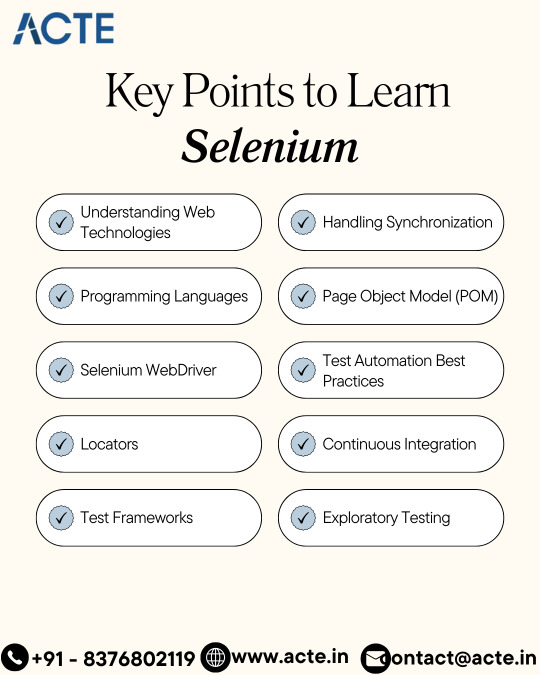
Controlling the Flight of Time: Managing Synchronization
Races, including web testing, can spring unexpected winners, highlighting race conditions. Synchronization isn’t merely about pausing; it's about orchestrating harmonious interactions. Whether it is using explicit waits for specific conditions or implicit waits that set a baseline patience for the WebDriver, executing scripts smoothly without unnecessary delays requires fine balancing.
The Page Object Model: Organizing Test Blueprints
Envision navigating a labyrinth as intricate as a webpage. The Page Object Model doesn’t merely delineate a route; it generates a comprehensive labyrinth map. By encompassing page elements and interactions within classes, the POM ensures test maintainability and scalability. Further, it separates the test logic from the UI specifics, transforming maintenance from a feared overhaul into a scripted dance.
Test Automation Philosophies: Standardizing Reliable Coding
Scripting test codes mirrors an art form, calling for clean, reusable, and modular code. It requires meaningful naming conventions reflecting their actions and error handling that communicates effectively. The objective isn't limited to automation but extends to establishing an ecosystem where each test script functions like a well-positioned cog in a well-engineered machine, comprehensible, and lasting.
The CI Connection: Maintaining Constant Quality
Incorporating Selenium into CI pipelines using Jenkins or Azure DevOps signifies a cultural shift rather than automation. It embraces a practice where every commit is scrutinized, preventing any regression or bug from going unnoticed. It's about early identification of issues in the development process, reinforcing confidence in deployment.
Beyond Automation: The Art of Exploratory Testing
While Selenium excels in functional testing, exploratory testing thrives in the realm of creativity. Here, human intuition and ingeniousness come into play, discerning nuanced use-cases and user experience issues that algorithms struggle to identify. Automation and exploratory testing function in unison, enriching and informing each other.
Lifelong Learning: Achieving Mastery in Selenium
Becoming a Selenium maestro isn't an overnight feat; it unveils through constant learning and practice. It extends beyond tool familiarity to a deep understanding of its relationship with software development practices, design patterns, and human-computer interaction. It establishes a symbiotic relationship where each advancement in web technology opens a new window for testing, and in return, Selenium guides these technologies towards maturity.
To acquire extensive expertise in using Selenium WebDriver for diverse web automation tasks, contemplate enrolling in Selenium Online Training, which provides community support and job placement assistance.
Conclusion
Emerging as a Selenium expert symbolizes a journey—a fusion of technological comprehension, programming skills, tool mastery, and adherence to best practices. It's about laying foundations, structuring, and incessant innovation to pace with web application development. With concentration, diligence, and a zest for exploration, the ultimate aim of gaining proficiency in Selenium automation testing will stand not just as a testament to your abilities, but a beacon of quality in the software development community.
Take the next step to become a Selenium master, harness power, and shape web application quality into its epitome. And most importantly, remember that just like any craft, it is the commitment to refining the details that breeds excellence.
0 notes
Text
Delving Deep into Selenium's Boundless Capabilities: An In-depth Analysis
In the realm of digital technology, the significance of web applications remains unparalleled. They act as the lifeblood for businesses worldwide, from startups to global corporations. Achieving smooth functionality across a myriad of browsers, operating systems, and devices is a formidable challenge, one that Selenium adeptly addresses. For those keen on mastering Selenium, participating in a Selenium Course in Bangalore can be a wise decision, offering exhaustive insights into this potent automation tool for web applications. Let us dive deep into the boundless capabilities of Selenium and uncover the expertise that earmarks it as a foundational element in web application testing.

The Genesis of Selenium: Tracing its Roots
Initiated in the early 2000s, Selenium was formulated to overcome the hurdles of manual testing. Emerging from a need, it has since evolved, with its latest iteration allowing for precise emulation of user interactions with web applications.
The Comprehensive Toolbox of Selenium
Selenium's portfolio comprises an assorted collection of tools, each designed to meet the diverse needs of the testing landscape. By leveraging these tools, one can automate almost any scenario that a web-based application might encounter.
Selenium IDE: The Initial Step
The Selenium IDE stands as a blessing for novices and veterans alike, offering a direct route from concept to creation, making the crafting of test prototypes as easy as pie.
Selenium WebDriver: The Core Mechanism
Acting as the backbone of the suite, Selenium WebDriver facilitates direct communication with the browser, enabling the automation of intricate test scenarios.
Selenium Grid: The Master Orchestrator
With the introduction of Selenium Grid, what was once a complex exercise in distributed testing has transformed into a seamless and harmonious process.
The Linguistic Versatility of Selenium
A key aspect of Selenium's widespread adoption is its compatibility with various programming languages. Whether you prefer Java, Python, C#, or Ruby, Selenium accommodates all, offering a flexible environment for testers and developers.
Seamless Browser Integration with Selenium
Selenium's assurance of cross-browser functionality is a testament to its reliability, allowing tests to be conducted across a real-world array of browsers like Chrome, Firefox, Internet Explorer, and Safari.
Elevating Testing to the Clouds: Selenium and Cloud Platforms
Integrating Selenium with cloud services such as BrowserStack and Sauce Labs elevates its capabilities, freeing testing from local resource limitations and broadening the scope for testing environments.
Selenium: A Pillar in DevOps and CI/CD
In the spheres of DevOps and Continuous Integration/Continuous Deployment, Selenium seamlessly integrates with tools like Jenkins, GitLab, and CircleCI, making automated tests a natural part of the development workflow, thereby promoting a continuous culture of quality.
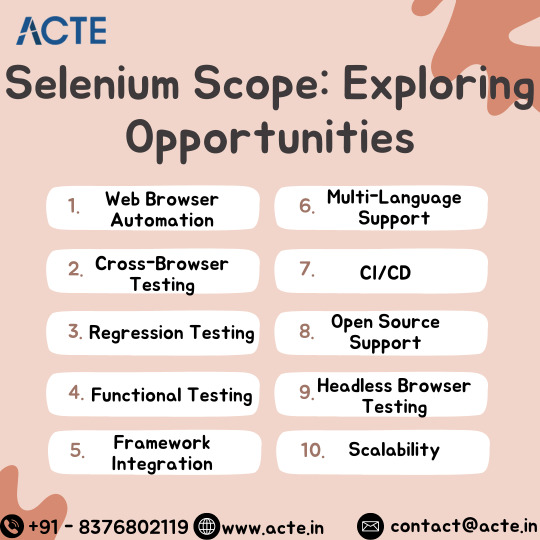
Navigating the Challenges with Selenium
Despite its strengths, employing Selenium is not without its trials:
Dealing with Dynamic Elements: The prevalence of dynamically changing elements in modern applications may require sophisticated techniques.
Learning Path: The comprehensive toolbox of Selenium demands a commitment to learning.
Consistency Across Browsers: Achieving uniform behavior across browsers presents a notable challenge.
Elevating Selenium Testing: Following Best Practices
To fully harness the power of Selenium, it is vital to adhere to industry best practices:
Code Management: Implementing strategies like the Page Object Model (POM) enhances code maintenance.
Test Organization: TestNG for Java and unittest for Python are exemplary tools for managing, organizing, and reporting tests.
Community Engagement: Engaging with the Selenium community can provide valuable insights and innovations. Enrolling in Selenium Online Training can further bolster expertise and community connection.
Final Reflections: Unveiling the Full Spectrum of Selenium
Describing Selenium merely as a testing tool significantly understates its value. It represents a paradigm shift towards achieving faultless web applications through its array of components, language support, robustness, and scalability, unveiling a world of opportunities for automated web testing.
Embarking on the Selenium journey is to join a movement towards quality, efficiency, and continuous advancement. It stands as a tribute to the craft of software development, ensuring precise and graceful user interactions with web applications.
As the landscape of web technologies broadens, so does Selenium's potential. With developments in Accessibility Testing, Performance Testing, and more intricate automated testing requirements, Selenium's path of innovation remains vibrant. Embracing Selenium not only validates existing capabilities but also opens doors to envisioning and testing for an enhanced digital future.
1 note
·
View note
Text
Selenium in Focus: Weighing the Pros and Cons for Successful Test Automation
In the realm of software testing, automation is key to enhancing efficiency, broadening coverage, and accelerating delivery times. Among the variety of automation tools available, Selenium stands out due to its endearing popularity, flexible features, and hardy capabilities. However, understanding that no one tool can be a panacea for all types and stages of testing is crucial. Considering your interest in mastering Selenium, I highly recommend enrolling in the Selenium Course in Bangalore. This comprehensive program will equip you with the essential skills and practical knowledge needed to excel in selenium testing. So, in this blog post, we'll put Selenium under the microscope, weighing its pros and cons, to help you make an informed decision for successful test automation.

The Upside of Selenium
Open Source
Foremost, Selenium is an open-source tool. Being free-of-charge paves the way for businesses to have a cost-effective test automation solution. Furthermore, constant updates and improvements from the vast community of Selenium developers keep the tool attuned to evolving needs.
Extensive Browser Compatibility
One of Selenium's shining features is its wide compatibility with all major browsers - Chrome, Firefox, Safari, and Internet Explorer. This allows test scripts created once to be executed across different browsers, ensuring your web application functions seamlessly everywhere.
Broad Language Support
Unlike some other testing tools that demand a specific scripting language, Selenium offers the freedom to write test scripts in several languages like Python, Ruby, C#, Java, and JavaScript. This flexibility allows testers to leverage their existing programming skills, making the switch to Selenium smoother.
Framework and Tool Integration
Integration is key in the modern testing environment where continuous delivery is the goal. Selenium can be comfortably coupled with testing frameworks like TestNG or JUnit for managing test suites and generating reports. It also pairs well with Maven, Jenkins, and Docker for continuous delivery.
Parallel Testing with Grid
Selenium's utility is not confined to testing individual applications. With Selenium Grid, you can undertake parallel and distributed testing across different machines concurrently. This significantly compresses the time needed for executing large test suites, speeding up your delivery cycle.
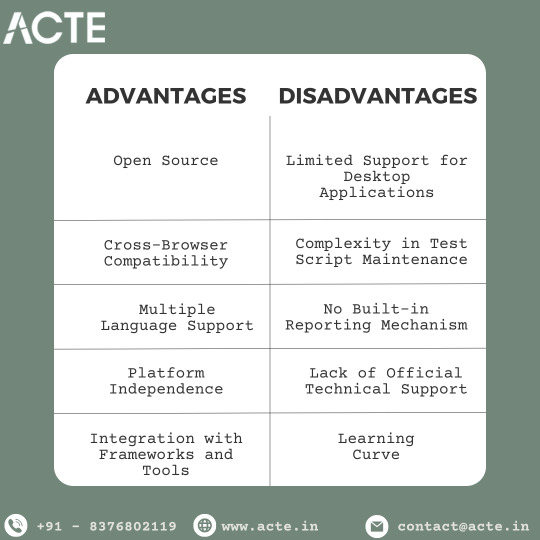
The Flipside of Selenium
While Selenium holds many advantages, it's prudent to remember that it does come with its set of limitations.
Steep Learning Curve
Although versatile, Selenium possesses a steep learning curve, especially for beginners. Comprehensive understanding of APIs, developing testing frameworks, and in-depth knowledge of multiple programming languages is essential to unlock its full potential.
Limited Support for Mobile Applications
While Selenium is unrivaled for automating web applications, when it comes to mobile applications, it lags. Tools specifically designed for mobile test automation like Appium will be necessary to fill the gap.
No Built-in Reporting Facility
Selenium's core focus is on automating web browsers, and as such, it does not inherently provide a reporting facility for recording the outcome of test cases. To overcome this, it must be integrated with third-party tools like TestNG or Extent Reports.
Dynamic Content can Cause Issues
Web content, which dynamically changes with each access, can be difficult to automate using vanilla Selenium, as locators may change with each session. While there are workarounds available, automating such cases can be challenging.
Frequent Updates
Given its open-source status, Selenium receives frequent updates from the community, which can sometimes lead to instability and necessitate regular maintenance of test scripts and environments.
Wrapping It Up
Reflecting on Selenium's pros and cons, what emerges is a picture of a robust, versatile automation tool well suited for a wide array of testing situations. Still, it's equally clear that Selenium needs to be used sensibly, considering project needs, the skillset of the team, and the specific context.
Test automation is never a one-size-fits-all solution, and Selenium is no exception. Therefore, it's significant to be mindful of Selenium's limitations while leveraging its strengths. The users need to supplement Selenium's abilities where necessary, either via additional tools or frameworks.
By considering both the pros and cons that come with Selenium, teams can ensure they're choosing a testing automation solution, which is not only robust and versatile but complements their project needs and team strengths. This approach will pave the way for more efficient, effective test automation, leading to high-quality software delivered faster and more consistently.
#tech#selenium#selenium training#selenium testing#selenium automation#automation testing#software testing#education#trending#writers on tumblr
0 notes
Text
My Journey with Azure IoT Hub: Connecting and Managing IoT Devices at Scale
The Internet of Things (IoT), which enables seamless connectivity and automation across numerous industries, has completely changed the way we engage with technology. I was curious to learn more about the Internet of Things and its possible uses as an aspiring IoT enthusiast. My experience using Azure IoT Hub, Microsoft’s cloud-based IoT platform, and how it assisted me in connecting and managing IoT devices at scale are both discussed in this blog.
Getting Started with Azure IoT Hub

To embark on my IoT journey, I began by understanding the fundamentals of Azure IoT Hub. Azure IoT Hub is a fully managed service that acts as a central hub for bi-directional communication between IoT devices and the cloud. It provides secure, reliable, and scalable connectivity for IoT solutions. Setting up an Azure IoT Hub was my first step. While the process was relatively straightforward, I encountered a few challenges along the way.
Connecting IoT Devices
Once Azure IoT Hub was set up, I delved into the world of IoT devices. I worked with various types of IoT devices, ranging from simple sensors to complex industrial machines. Connecting these devices to Azure IoT Hub required the implementation of device-specific protocols such as MQTT or HTTP. Additionally, I focused on securing device connections and data transmission by utilizing security features provided by Azure IoT Hub.
Real-world examples of IoT devices connected to Azure IoT Hub are aplenty. For instance, in the healthcare industry, wearable devices can transmit patient vitals to Azure IoT Hub, allowing healthcare providers to monitor and respond to critical situations promptly. In smart homes, IoT devices such as thermostats and security cameras can be connected to Azure IoT Hub, enabling remote control and monitoring capabilities.
Managing IoT Devices at Scale
As my IoT project grew, I encountered the need to scale up the number of connected devices. Azure IoT Hub offered robust device management features that simplified the process of managing a large fleet of devices. I could remotely monitor the health, status, and firmware version of each device, enabling efficient troubleshooting and maintenance. Implementing best practices for device management, such as grouping devices based on location or functionality, enhanced the overall operational efficiency of my IoT solution.
Data Ingestion and Processing
Data collected from IoT devices is a valuable asset that can drive actionable insights and informed decision-making. Azure IoT Hub facilitated the ingestion and routing of data to Azure services for further processing and analysis. I had the opportunity to work with Azure Stream Analytics and Azure Functions, which enabled real-time data processing, transformation, and visualization. Leveraging these services allowed me to unlock the true potential of IoT data and derive meaningful insights.
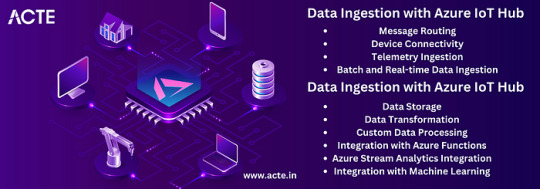
Security and Compliance
Any IoT solution must prioritize security. Azure IoT Hub provided robust security features that ensured end-to-end protection of IoT deployments. These features included device authentication, message encryption, and integration with Azure Active Directory for access control. Additionally, Azure IoT Hub helped me meet compliance and regulatory requirements by providing built-in support for industry standards such as ISO 27001, HIPAA, and GDPR. Throughout my journey, I learned valuable lessons and implemented best practices for securing IoT solutions.
Scalability and Performance
Scaling an IoT solution to handle thousands or millions of devices is a complex task. Azure IoT Hub offered scalability features that allowed me to effortlessly handle large-scale IoT deployments. With Azure IoT Hub’s device-to-cloud messaging capabilities, I could reliably transmit messages to and from a massive number of devices. Moreover, I gained insights into optimizing IoT solutions for performance by considering factors such as message size, frequency, and device capabilities.
Real-World Use Cases
To understand the versatility of Azure IoT Hub, it is crucial to explore real-world use cases. In the manufacturing industry, Azure IoT Hub can be leveraged to connect and monitor machines on the factory floor, ensuring optimal performance and predictive maintenance. In the agriculture sector, IoT devices connected to Azure IoT Hub can collect data on soil moisture levels, temperature, and humidity, enabling farmers to make data-driven decisions for irrigation and crop management. These use cases highlight the valuable role that Azure IoT Hub plays in various domains and industries.
Future of IoT and Azure IoT Hub
The future of IoT is promising, with emerging trends shaping the landscape. As IoT continues to evolve, Azure IoT Hub will play a crucial role in enabling seamless connectivity, advanced analytics, and artificial intelligence capabilities. Integration with other Azure services and continuous updates from Microsoft ensure that Azure IoT Hub remains at the forefront of IoT innovation. The possibilities for IoT applications are limitless, and Azure IoT Hub will continue to empower developers and organizations to build robust and scalable IoT solutions.
Throughout my journey with Azure IoT Hub, I gained valuable insights and experiences. Azure IoT Hub simplified the process of connecting and managing IoT devices, providing a reliable and scalable platform. The seamless integration with other Azure services allowed me to unlock the full potential of IoT data. Moreover, the security and compliance features provided peace of mind, ensuring that my IoT solution was protected from threats. Overall, Azure IoT Hub has been instrumental in my IoT journey, contributing to enhanced efficiency and productivity.
Recommendations and Tips
For those interested in starting their own IoT journey with Azure IoT Hub, I offer the following recommendations and tips:
Begin with a clear understanding of your IoT use case and requirements.
Familiarize yourself with the documentation and resources provided by Microsoft to gain a solid foundation.
Start small and gradually scale your IoT solution as needed.
Take advantage of the device management and security features offered by Azure IoT Hub.
Leverage other Azure services such as Azure Stream Analytics and Azure Functions to derive meaningful insights from IoT data.
Stay updated on emerging trends and best practices in the IoT space.
To deepen your knowledge of IoT and Azure IoT Hub, I recommend exploring Microsoft’s official documentation, participating in the ACTE Technologies Microsoft Azure training, and attending IoT-focused conferences and events.

Azure IoT Hub has proven to be a powerful and comprehensive platform for connecting and managing IoT devices at scale. Throughout my journey, I witnessed the transformative potential of IoT solutions and the crucial role played by Azure IoT Hub in enabling seamless connectivity, advanced analytics, and robust security. As IoT continues to evolve, Azure IoT Hub will undoubtedly remain at the forefront of IoT innovation, empowering organizations to build scalable and efficient IoT solutions. I encourage readers to embark on their own IoT journeys, leveraging the capabilities of Azure IoT Hub to unlock the full potential of IoT. Join me in embracing the future of IoT and revolutionizing industries through connected devices. Please leave your comments, stories, and inquiries in the space provided below. Let’s continue the conversation and explore the endless possibilities of IoT together.
#microsoft azure#cloud services#information technology#education#tech#technology#iot#innovation#cloud computing
5 notes
·
View notes
Text
Azure Kubernetes Service (AKS): Mastering Container Orchestration
As cloud computing continues to revolutionize the way applications are developed and deployed, container orchestration has emerged as a critical component for managing and scaling containerized applications. In this blog post, we will delve into the concept of container orchestration and explore how Azure Kubernetes Service (AKS) plays a crucial role in this domain. We will discuss the importance of container orchestration in modern cloud computing and provide a comprehensive guide to understanding and utilizing AKS for container management.

Understanding Container Orchestration
Before diving into the specifics of AKS, it is essential to grasp the concept of container orchestration and its role in managing containers. Container orchestration involves automating containers’ deployment, scaling, and management within a cluster. Manual management of containers poses several challenges, such as resource allocation, load balancing, and fault tolerance. Automated container orchestration solutions like AKS provide a robust and efficient way to address these challenges, enabling seamless application deployment and scaling.
Getting Started with AKS
To begin our journey with AKS, let’s first understand what it is. Microsoft Azure offers a controlled container orchestration service called Azure Kubernetes Service (AKS). It simplifies the deployment and management of Kubernetes clusters, allowing developers to focus on building and running their applications. Setting up an AKS cluster involves several steps, including creating a resource group, configuring the cluster, and configuring networking. While AKS streamlines the process, it is essential to be aware of potential prerequisites and challenges during the initial setup.
Deploying Applications with AKS
Once the AKS cluster is up and running, the next step is to deploy containerized applications to the cluster. AKS provides several options for deploying applications, including using YAML manifests, Azure DevOps Pipelines, and Azure Container Registry. Deploying applications with AKS offers numerous benefits, such as easy scaling, rolling updates, and application versioning. Real-world examples and use cases of applications deployed with AKS illustrate the practical applications and advantages of utilizing AKS for application deployment.
Scaling and Load Balancing
One of the significant advantages of AKS is its automatic scaling capabilities. AKS monitors the resource utilization of containers and scales the cluster accordingly to handle increased demand. Load balancing is another critical aspect of container orchestration, ensuring that traffic is distributed evenly across the containers in the cluster. Exploring AKS’s automatic scaling and load-balancing features provides insights into how these capabilities simplify application management and ensure optimal performance.
Monitoring and Maintenance
Monitoring and maintaining AKS clusters are essential for ensuring the stability and performance of applications. AKS offers built-in monitoring and logging features that enable developers to gain visibility into the cluster’s health and troubleshoot issues effectively. Best practices for maintaining AKS clusters, such as regular updates, backup strategies, and resource optimization, contribute to the overall stability and efficiency of the cluster. Sharing insights and lessons learned from managing AKS in a production environment helps developers better understand the intricacies of AKS cluster maintenance.
Security and Compliance
Container security is a crucial consideration when using AKS for container orchestration. AKS provides various security features, including Azure Active Directory integration, role-based access control, and network policies. These features help secure the cluster and protect against unauthorized access and potential threats. Additionally, AKS assists in meeting compliance requirements by providing features like Azure Policy and Azure Security Center integration. Addressing the challenges faced and solutions implemented in ensuring container security with AKS provides valuable insights for developers.
Advanced AKS Features
In addition to its core features, AKS offers several advanced capabilities that enhance container orchestration. Integration with Azure Monitor enables developers to gain deeper insights into the performance and health of their applications running on AKS. Helm charts and Azure DevOps integration streamline the deployment and management of applications, making the development process more efficient. Azure Policy allows developers to enforce governance and compliance policies within the AKS cluster, ensuring adherence to organizational standards.
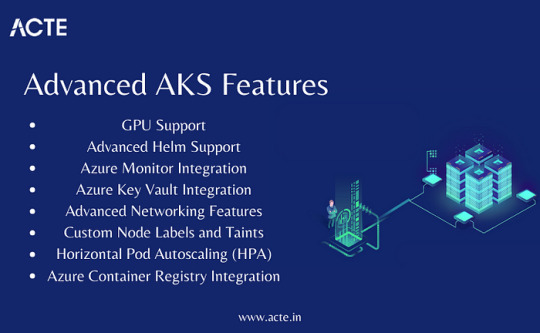
Real-world Use Cases and Case Studies
To truly understand the impact of AKS on container orchestration, it is essential to explore real-world use cases and case studies. Many organizations across various industries have successfully implemented AKS for their container management needs. These use cases highlight the versatility and applicability of AKS in scenarios ranging from microservices architectures to AI-driven applications. By examining these examples, readers can gain insights into how AKS can be leveraged in their projects.
Future Trends and Considerations
The container orchestration landscape is continuously evolving, and staying updated on emerging trends and considerations is crucial. Kubernetes, the underlying technology of AKS, is evolving rapidly, with new features and enhancements being introduced regularly. Understanding the future trends in container orchestration and Kubernetes helps developers make informed decisions and stay ahead of the curve. Additionally, considering the role of AKS in the future of cloud-native applications provides insights into the long-term benefits and possibilities of utilizing AKS.
Benefits and Takeaways
Summarizing the key benefits of using Azure Kubernetes Service, we find that AKS simplifies container orchestration and management, reduces operational overhead, and enhances scalability and fault tolerance. By leveraging AKS, developers can focus on building and running their applications without worrying about the underlying infrastructure. Recommendations for starting or advancing the AKS journey include exploring AKS documentation, participating in the AKS community, and experimenting with sample applications.
In conclusion, mastering container orchestration is crucial in the world of modern cloud computing. Azure Kubernetes Service (AKS) provides a powerful and efficient solution for managing and scaling containerized applications. Explore online platforms like the ACTE Institute, which provides detailed Microsoft Azure courses, practice examinations, and study materials for certification exams, to get started on your Microsoft Azure certification journey. By understanding the concepts and features of AKS, developers can streamline their container management processes, enhance application deployment and scalability, and improve overall operational efficiency. We encourage readers to explore AKS for their container management needs and engage in the AKS community to continue learning and sharing experiences.
#microsoft azure#kubernetes#cloud services#education#technology#information technology#tech#information security#information
1 note
·
View note
Text
Azure’s Evolution: What Every IT Pro Should Know About Microsoft’s Cloud
IT professionals need to keep ahead of the curve in the ever changing world of technology today. The cloud has become an integral part of modern IT infrastructure, and one of the leading players in this domain is Microsoft Azure. Azure’s evolution over the years has been nothing short of remarkable, making it essential for IT pros to understand its journey and keep pace with its innovations. In this blog, we’ll take you on a journey through Azure’s transformation, exploring its history, service portfolio, global reach, security measures, and much more. By the end of this article, you’ll have a comprehensive understanding of what every IT pro should know about Microsoft’s cloud platform.
Historical Overview
Azure’s Humble Beginnings
Microsoft Azure was officially launched in February 2010 as “Windows Azure.” It began as a platform-as-a-service (PaaS) offering primarily focused on providing Windows-based cloud services.
The Azure Branding Shift
In 2014, Microsoft rebranded Windows Azure to Microsoft Azure to reflect its broader support for various operating systems, programming languages, and frameworks. This rebranding marked a significant shift in Azure’s identity and capabilities.
Key Milestones
Over the years, Azure has achieved numerous milestones, including the introduction of Azure Virtual Machines, Azure App Service, and the Azure Marketplace. These milestones have expanded its capabilities and made it a go-to choice for businesses of all sizes.
Expanding Service Portfolio
Azure’s service portfolio has grown exponentially since its inception. Today, it offers a vast array of services catering to diverse needs:
Compute Services: Azure provides a range of options, from virtual machines (VMs) to serverless computing with Azure Functions.
Data Services: Azure offers data storage solutions like Azure SQL Database, Cosmos DB, and Azure Data Lake Storage.
AI and Machine Learning: With Azure Machine Learning and Cognitive Services, IT pros can harness the power of AI for their applications.
IoT Solutions: Azure IoT Hub and IoT Central simplify the development and management of IoT solutions.
Azure Regions and Global Reach
Azure boasts an extensive network of data centers spread across the globe. This global presence offers several advantages:
Scalability: IT pros can easily scale their applications by deploying resources in multiple regions.
Redundancy: Azure’s global datacenter presence ensures high availability and data redundancy.
Data Sovereignty: Choosing the right Azure region is crucial for data compliance and sovereignty.
Integration and Hybrid Solutions
Azure’s integration capabilities are a boon for businesses with hybrid cloud needs. Azure Arc, for instance, allows you to manage on-premises, multi-cloud, and edge environments through a unified interface. Azure’s compatibility with other cloud providers simplifies multi-cloud management.
Security and Compliance
Azure has made significant strides in security and compliance. It offers features like Azure Security Center, Azure Active Directory, and extensive compliance certifications. IT pros can leverage these tools to meet stringent security and regulatory requirements.
Azure Marketplace and Third-Party Offerings
Azure Marketplace is a treasure trove of third-party solutions that complement Azure services. IT pros can explore a wide range of offerings, from monitoring tools to cybersecurity solutions, to enhance their Azure deployments.
Azure DevOps and Automation
Automation is key to efficiently managing Azure resources. Azure DevOps services and tools facilitate continuous integration and continuous delivery (CI/CD), ensuring faster and more reliable application deployments.

Monitoring and Management
Azure offers robust monitoring and management tools to help IT pros optimize resource usage, troubleshoot issues, and gain insights into their Azure deployments. Best practices for resource management can help reduce costs and improve performance.
Future Trends and Innovations
As the technology landscape continues to evolve, Azure remains at the forefront of innovation. Keep an eye on trends like edge computing and quantum computing, as Azure is likely to play a significant role in these domains.
Training and Certification
To excel in your IT career, consider pursuing Azure certifications. ACTE Institute offers a range of certifications, such as the Microsoft Azure course to validate your expertise in Azure technologies.

In conclusion, Azure’s evolution is a testament to Microsoft’s commitment to cloud innovation. As an IT professional, understanding Azure’s history, service offerings, global reach, security measures, and future trends is paramount. Azure’s versatility and comprehensive toolset make it a top choice for organizations worldwide. By staying informed and adapting to Azure’s evolving landscape, IT pros can remain at the forefront of cloud technology, delivering value to their organizations and clients in an ever-changing digital world. Embrace Azure’s evolution, and empower yourself for a successful future in the cloud.
#microsoft azure#tech#education#cloud services#azure devops#information technology#automation#innovation
2 notes
·
View notes
Text
Hybrid Cloud Strategies with Azure Arc: My Practical Insight
Are you ready to unlock the true potential of hybrid cloud strategies? Look no further than Azure Arc, the game-changing solution that promises seamless integration and unparalleled flexibility. From streamlining operations to enhancing security, Azure Arc has revolutionized the way organizations harness the power of both on-premises and cloud environments. In this blog post, I’ll be diving into my practical insights on leveraging Azure Arc for your hybrid cloud journey. So buckle up as we explore the endless possibilities and unveil a new era in hybrid computing!
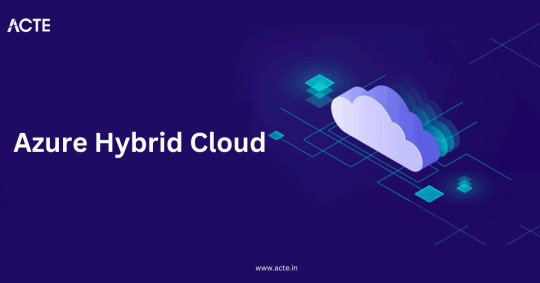
Introduction to Hybrid Cloud Strategies with Azure Arc
I’m under pressure to digitally transform in order to remain competitive. I’m looking to the cloud as a way to accelerate this transformation. Not all workloads, meanwhile, are appropriate for the public cloud. Some may require on-premises or edge computing due to data sovereignty or local regulations. Others may need to be kept on-premises due to performance requirements.
Hybrid cloud strategies allow me to keep some workloads on-premises or at the edge while still taking advantage of the agility and scalability of the public cloud. Azure Arc is a tool that can help me manage and monitor my hybrid cloud deployments. In this blog post, I will share my practical insight into using Azure Arc for my hybrid cloud deployments.
Benefits of Azure Arc Adoption & Challenges in Implementing it
In recent years, using the cloud has grown in popularity among organizations of all sorts. One of the major advantages of cloud computing is its scalability; I can quickly add or remove capacity as needed without making a long-term commitment. Azure Arc is a hybrid cloud solution that allows me to take advantage of the benefits of the cloud while still maintaining control over my data and applications.
There are several benefits to adopting Azure Arc, including:
Increased flexibility and scalability: As mentioned above, one of the major advantages of Azure Arc is its scalability. I can easily add or remove capacity as needed, without making a long-term commitment. This can help me save money on IT infrastructure costs, as well as ensure that I have the necessary resources available when I need them.
Improved disaster recovery: Another benefit of Azure Arc is improved disaster recovery capabilities. With this solution in place, I can quickly recover from outages or disasters with minimal downtime. This can help keep my business up and running even in the event of a major problem.
Enhanced security: Security is always a major concern for me, especially when it comes to sensitive data. With Azure Arc in place, I can take advantage of enhanced security features such as encrypted data storage and multi-factor authentication. This can help give me peace of mind knowing that my data is safe and secure.
Lower maintenance costs: Maintaining on-premises IT infrastructure can be costly and time-consuming. Azure Arc helps me lower maintenance costs by simplifying resource management and automating tasks.
Understanding the Necessary Requirements for Azure Arc Usage
Azure Arc is a cloud management platform that enables me to optimize my hybrid cloud deployments. It provides a unified control plane for managing resources across on-premises, edge, and multi-cloud environments. Azure Arc also simplifies the process of integrating Azure services with on-premises and third-party solutions.
In order to use Azure Arc, I must first have an Azure subscription. I must also have the desired Azure Resource Manager (ARM) template or Resource Manager package deployed in my environment. Azure Arc uses these templates or packages to deploy and manage resources in the target environment.
Once the necessary requirements are met, I can begin using Azure Arc to manage my hybrid cloud deployments. I can use the platform to provision and manage resources, monitor activity and usage patterns, set policies and governance controls, etc. Additionally, I can use Azure Arc to connect my on-premises or third-party solutions with Azure services. This allows me to take advantage of the many benefits that Azure has to offer, such as scalability, high availability, security, and so on.
Steps for Setting Up Azure Arc Configurations
Azure Arc is a cloud service that enables me to manage and monitor my resources whether they’re running on Azure, on-premises, or in other clouds. With Azure Arc, I can use the same tools and portal experiences I’m used to in Azure to centrally govern all my infrastructure.
Setting up an Azure Arc configuration is simple and straightforward. I just need to follow these simple instructions:
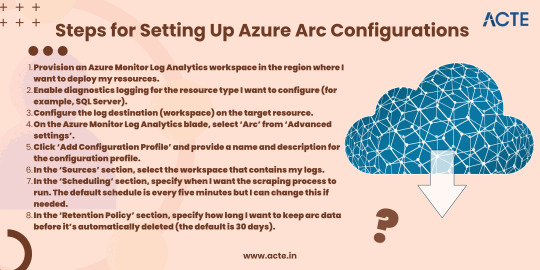
9a. If I want to scrape data from multiple workspaces, I can repeat steps 5–8 for each workspace.
Troubleshooting Common Issues Related to Hybrid Cloud with Azure Arc If I’m working with hybrid cloud and Azure Arc, there are a few common issues I may run into. Here’s how to troubleshoot them:
I can’t see all of my resources in the Azure portal.
Make sure that I’ve selected the correct subscription in the Azure portal. If I’m still not seeing all of my resources, check the resource provider status page to see if there are any known issues.
I’m getting errors when trying to deploy resource group templates.
When deploying resource group templates, make sure that the template includes all required resources for Azure Arc enabled resource providers. Consult the Azure Resource Manager documentation for further details.
My hybrid cloud app isn’t running correctly.
If I’m having trouble with a hybrid cloud app, first check the logs to see if there are any error messages. Then, try redeploying the app using a different approach (for example, using Azure CLI or PowerShell instead of the Azure portal).
Unifying Multiple Clouds with One Platform:
A Comprehensive Overview Azure Arc is a cloud management platform that enables me to unify multiple clouds with one platform. Azure Arc provides a comprehensive overview of my resources and allows for central management and policy enforcement across all of my Azure subscriptions. Azure Arc also provides integrated security and compliance features to help me secure my data and meet regulatory requirements.
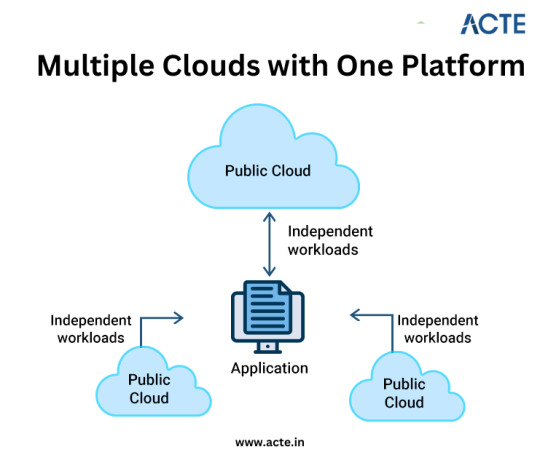
Best Practices for Utilizing Hybrid Cloud Strategies with Azure Arc
When it comes to hybrid cloud strategies with Azure Arc, there are a few best practices that I should keep in mind. For starters, I should make sure that I have a clear understanding of my workloads and how they need to be supported. I should also have a clear picture of my network topology and how the different components will interact with each other. Additionally, it’s important to have a plan for data security and management, as well as monitoring and logging. By keeping these things in mind, I can be sure that my hybrid cloud strategy with Azure Arc is as effective as possible.
All things considered, Azure Arc is an impressive offering from Microsoft that can help me realize the potential of hybrid cloud technology. By leveraging my existing infrastructure while taking advantage of the benefits offered by public clouds like Azure, I can enjoy features such as greater scalability and improved flexibility to meet changing needs. Whether I need basic access control or more advanced policies to manage my distributed systems, my practical insight on using Azure Arc for my hybrid cloud strategy shows how powerful this platform is in streamlining and optimizing cloud operations for various enterprises.
2 notes
·
View notes
Text
From Novice to Azure Enthusiast: My Azure Learning Path
In the ever-evolving landscape of technology, there's a constant need to adapt and learn. My journey into the world of Microsoft Azure, one of the leading cloud platforms, began as a humble exploration driven by curiosity. Little did I know that this voyage would lead to a profound transformation—from a novice to a passionate Azure enthusiast. Join me as I reflect on this incredible journey, exploring the significance of Azure in today's digital realm.

The Curious Novice
Like many, my initial foray into the cloud was fueled by a sense of wonder and intrigue. Cloud computing and platforms like Microsoft Azure seemed like a mysterious realm, shrouded in the digital equivalent of clouds. Questions swirled in my mind: What exactly is Azure? How does it work? And most importantly, what could I achieve with it?
A Transformation Unfolds
As I ventured further into the Azure universe, I discovered that my curiosity was the spark that ignited a profound transformation. What started as a novice's curiosity soon evolved into an enthusiastic journey filled with challenges, discoveries, and remarkable growth.
II. The Humble Beginnings
My Azure learning path commenced with a profound realization—I knew very little about cloud computing. The cloud was like an enigma waiting to be unraveled. To begin my journey, I had to acknowledge my novice status.
Starting from Ground Zero
I was honest with myself about my limited knowledge of cloud computing and Azure. It felt like I was standing at the base of a tall mountain, with a steep climb ahead. But every mountaineer starts at the bottom, and I was ready for the ascent.
Motivation and Exploration
The motivation to dive into the world of Azure came from a desire to understand the technology that powers our digital age. Azure represented an opportunity to explore the capabilities of cloud computing and harness them for personal and professional growth.
The Initial Challenges
Every journey has its share of challenges, and mine was no different. The terminology, concepts, and sheer vastness of Azure were initially overwhelming. But with determination, I pushed forward, determined to conquer these obstacles.
III. Hands-On Learning
In the world of Azure, theory is essential, but practice is paramount. Hands-on learning became my compass, guiding me through the Azure landscape.
Practical Experience Matters
I quickly realized that reading about Azure was one thing, but experiencing it firsthand was entirely different. The hands-on aspect was where the real learning happened.
Azure's Free Tier: A Blessing
Azure's free tier was a blessing for a novice like me. It allowed me to experiment, create resources, and explore various services without the fear of incurring significant costs. This sandbox environment was invaluable.
Early Projects and Key Lessons
My Azure journey was dotted with early projects, each offering a valuable lesson. From deploying virtual machines to setting up web applications, I learned by doing. These experiences laid a solid foundation for my Azure knowledge.
IV. Certifications: A Guiding Light
As my understanding of Azure deepened, I realized that certifications could serve as guiding lights on my learning path.
Certifications as Milestones
I decided to pursue Azure certifications to validate my knowledge and skills. These certifications provided clear milestones on my Azure journey, giving me a sense of accomplishment with each successful exam.
The Choice of Certifications
Choosing the right certifications was a crucial decision. I opted for certifications that aligned with my interests and career goals, providing a clear direction for my learning journey. I suggest looking into the services provided by the ACTE Institute, which offers a thorough Microsoft Azure course. This course builds a solid academic foundation while covering important subjects. To improve your Azure abilities, think about enrolling in accredited Microsoft Azure training classes.

The Preparation Process
Preparing for Azure certifications was a transformative experience. It required discipline, dedication, and a structured approach. It pushed me to revisit and reinforce my Azure knowledge, solidifying my understanding of core concepts.
The First Azure Certification
Passing my first Azure certification was a pivotal moment. It not only boosted my confidence but also opened doors to new opportunities. It was a testament to the progress I had made on my Azure learning path.
V. Networking and Community
One of the most rewarding aspects of my Azure journey was connecting with a vibrant and supportive community.
The Azure Community
Azure wasn't just a platform; it was a community of enthusiasts, experts, and learners. Engaging with this community was like joining a family of like-minded individuals.
Where Support Thrives
I found support and information in various places—the Azure forums, social media groups, and local meetups. These platforms were treasure troves of knowledge and camaraderie.
Lessons from the Community
Interacting with the Azure community taught me invaluable lessons. I learned about real-world Azure implementations, best practices, and the latest trends in cloud technology. The community was a wellspring of inspiration and insights.
VI. Bridging the Gap: Azure in the Real World
As my Azure knowledge grew, I sought to bridge the gap between learning and real-world application.
Applying Azure Skills
I volunteered for Azure-related projects at my workplace, eager to apply my newfound skills. It was here that I realized the true potential of Azure in solving real-world challenges.
Real-World Projects
From setting up scalable e-commerce platforms to implementing data analytics solutions, Azure proved to be a versatile and reliable partner. It wasn't just a technology I learned about—it was a technology I could leverage to create real impact.
Benefits and Challenges
Using Azure in professional settings came with its benefits and challenges. The flexibility and scalability of the platform were evident, but I also encountered issues that required creative problem-solving. These challenges enriched my Azure journey.
VII. The Journey Continues
My Azure learning path is far from over. It's a journey without a final destination, as Azure, like the cloud itself, is constantly evolving.
Future Aspirations
I look forward to expanding my Azure expertise. Advanced topics and certifications await, and I'm eager to explore them. Azure offers a boundless landscape of learning opportunities.
Embracing the Ongoing Nature
One thing I've come to understand is that Azure is not a one-time destination—it's an ongoing journey. The cloud is dynamic, and Azure's capabilities continue to expand. I'm excited to evolve with Azure, keeping pace with the ever-changing technology landscape.
My journey from a novice to an Azure enthusiast has been nothing short of transformational. It's a testament to the power of curiosity, hands-on learning, certifications, and community engagement.
The Azure Transformation
I've evolved from someone who knew little about Azure into an enthusiast who embraces the cloud's potential with open arms. This transformation has not only enriched my knowledge but has also opened doors to new opportunities and possibilities.
The Key Takeaways
If there's one thing I hope you take away from my Azure learning path, it's the importance of starting with curiosity, embracing hands-on learning, pursuing certifications, and connecting with the Azure community.
2 notes
·
View notes
Text
From Novice to Pro: Mastering Microsoft Azure for Unparalleled Career Growth
Introduction
In today’s ever-evolving digital landscape, staying ahead in the realm of information technology is essential for professionals seeking unparalleled career growth. With the increasing reliance on cloud computing, mastering Microsoft Azure, one of the industry’s leading cloud platforms, has become a vital skill set. This comprehensive guide aims to transform novices into experts, providing valuable insights and resources to help individuals navigate the Azure landscape and unlock endless career opportunities.

Education: Building a Strong Foundation
Embrace the Fundamentals
Before diving deep into the vast realm of Microsoft Azure, it is crucial to lay a strong foundation by acquiring foundational knowledge. Familiarize yourself with the core concepts of cloud computing, such as Infrastructure as a Service (IaaS), Platform as a Service (PaaS), and Software as a Service (SaaS). Understand the advantages and drawbacks of cloud computing and how it is revolutionizing the way businesses operate.
Explore Azure Fundamentals
Start by earning the Azure Fundamentals certification as you set out on your path to mastering Microsoft Azure. This entry-level certification validates your understanding of Azure services, cloud concepts, Azure pricing models, security, privacy, and compliance. It equips you with a strong base of Azure knowledge and sets you on the path to becoming an Azure expert.
Invest in Continuous Learning
To stay ahead in the rapidly evolving technology landscape, it is crucial to invest in continuous learning. The ACTE institute offers a variety of resources, including Microsoft Azure training courses, documentation, and certifications, to help individuals deepen their Azure expertise. Leverage these resources to expand your knowledge and enhance your problem-solving skills, keeping you at the forefront of industry developments.
Information: Navigating the Azure Landscape
Familiarize Yourself with Azure Services
Microsoft Azure offers a vast array of services designed to meet diverse business needs. Spend time exploring and gaining familiarity with the core Azure services, including Virtual Machines, Azure App Service, Azure Functions, Azure Storage, and Azure SQL Database. Understand their use cases, benefits, and how they integrate within the broader Azure ecosystem. This knowledge will enable you to confidently architect, deploy, and manage Azure solutions.
Master Azure Networking
Networking forms the backbone of any cloud infrastructure. Azure provides an extensive suite of networking services and capabilities that enable seamless and secure communication between various components of an Azure deployment. Dive deep into understanding concepts such as virtual networks, subnets, Azure DNS, Azure Load Balancer, and Azure Traffic Manager. By mastering Azure networking, you will gain the expertise needed to design and deploy highly available and resilient architectures.
Harness the Power of Azure Security
As organizations increasingly adopt cloud technologies, ensuring robust security measures within the Azure environment is paramount. Gain an in-depth understanding of Azure’s security features and controls, including Azure Active Directory, Azure Security Center, Azure Key Vault, and Azure DDoS Protection. By becoming well-versed in Azure security, you can protect sensitive data, detect and respond to threats, and confidently address compliance requirements.
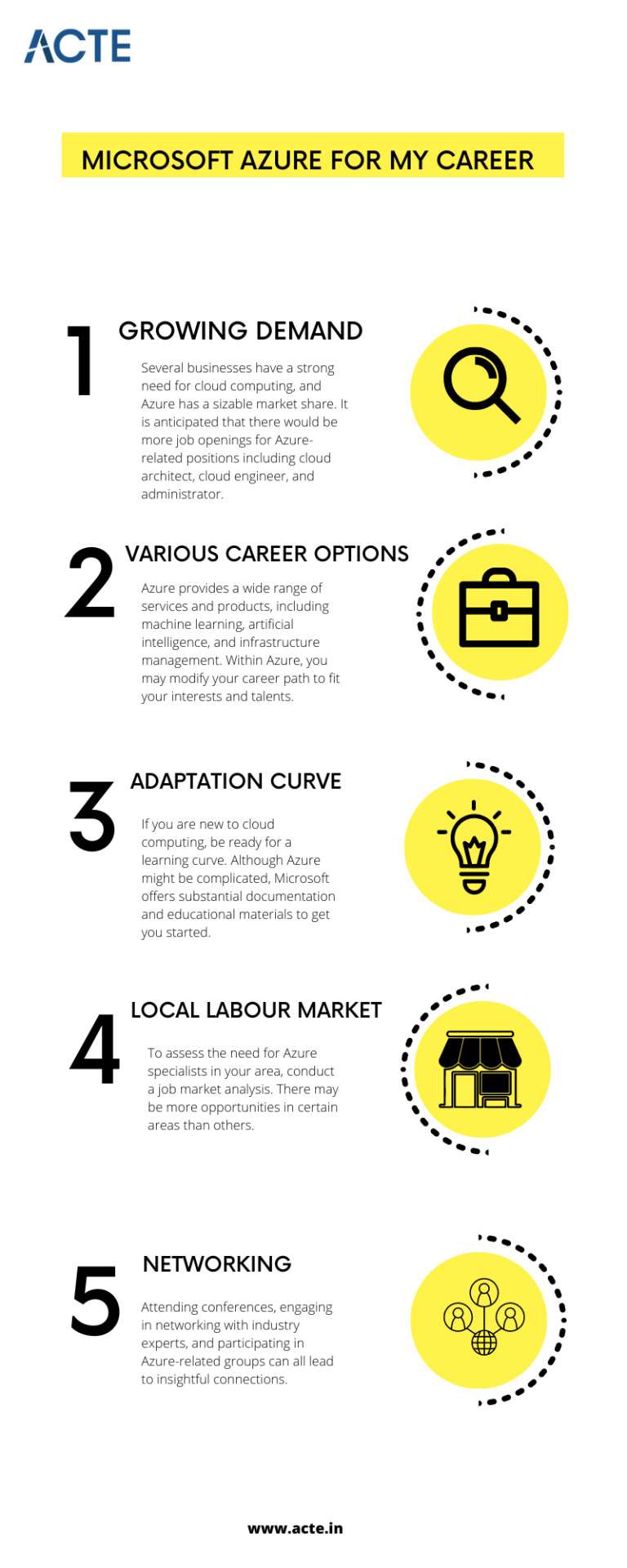
Technology: Advancing Azure Proficiency
Automate with Azure Automation
Automation is the key to maximizing efficiency and productivity within Azure deployments. Acquaint yourself with Azure Automation, a service that allows you to automate repetitive, manual tasks and standardize processes. Learn how to create and manage runbooks, design and implement automation workflows, and leverage the power of Desired State Configuration (DSC). By becoming proficient in Azure Automation, you can streamline operations and unleash the true potential of Azure.
Embrace DevOps with Azure DevOps
In the world of modern software development, DevOps practices play a vital role in driving agility, collaboration, and continuous delivery. Azure DevOps provides an end-to-end DevOps platform, empowering teams to plan, develop, test, and deploy applications seamlessly. Expand your Azure proficiency by diving into Azure Boards, Azure Repos, Azure Pipelines, and Azure Test Plans. Mastering Azure DevOps will enable you to deliver value faster, ensuring your career growth remains unmatched.
Explore Advanced Azure Services
Once you have developed a strong foundation in Azure, immerse yourself in the realm of advanced Azure services. Gain expertise in areas such as Azure Kubernetes Service (AKS), Azure Functions, Azure Logic Apps, Azure Cognitive Services, and Azure Machine Learning. These cutting-edge services allow you to build intelligent applications, leverage artificial intelligence capabilities, and unlock new possibilities in various domains. By continuously exploring and expanding your Azure skills, you position yourself as a sought-after professional in the technology landscape.
Mastering Microsoft Azure offers an unparalleled path to career growth in the information technology industry. By embracing education, navigating the vast realm of Azure services, and advancing your Azure proficiency through technology-driven practices, you equip yourself with the tools and knowledge needed to propel your career to new heights. The journey from a novice to an Azure pro may seem daunting, but with determination and a commitment to continuous learning, the rewards are plentiful. So, seize the opportunity, immerse yourself in the world of Microsoft Azure, and unlock a future filled with endless possibilities.
5 notes
·
View notes
Text
A Complete Guide to Mastering Microsoft Azure for Tech Enthusiasts
With this rapid advancement, businesses around the world are shifting towards cloud computing to enhance their operations and stay ahead of the competition. Microsoft Azure, a powerful cloud computing platform, offers a wide range of services and solutions for various industries. This comprehensive guide aims to provide tech enthusiasts with an in-depth understanding of Microsoft Azure, its features, and how to leverage its capabilities to drive innovation and success.
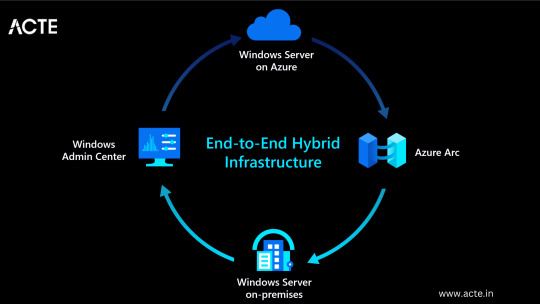
Understanding Microsoft Azure
A platform for cloud computing and service offered through Microsoft is called Azure. It provides reliable and scalable solutions for businesses to build, deploy, and manage applications and services through Microsoft-managed data centers. Azure offers a vast array of services, including virtual machines, storage, databases, networking, and more, enabling businesses to optimize their IT infrastructure and accelerate their digital transformation.
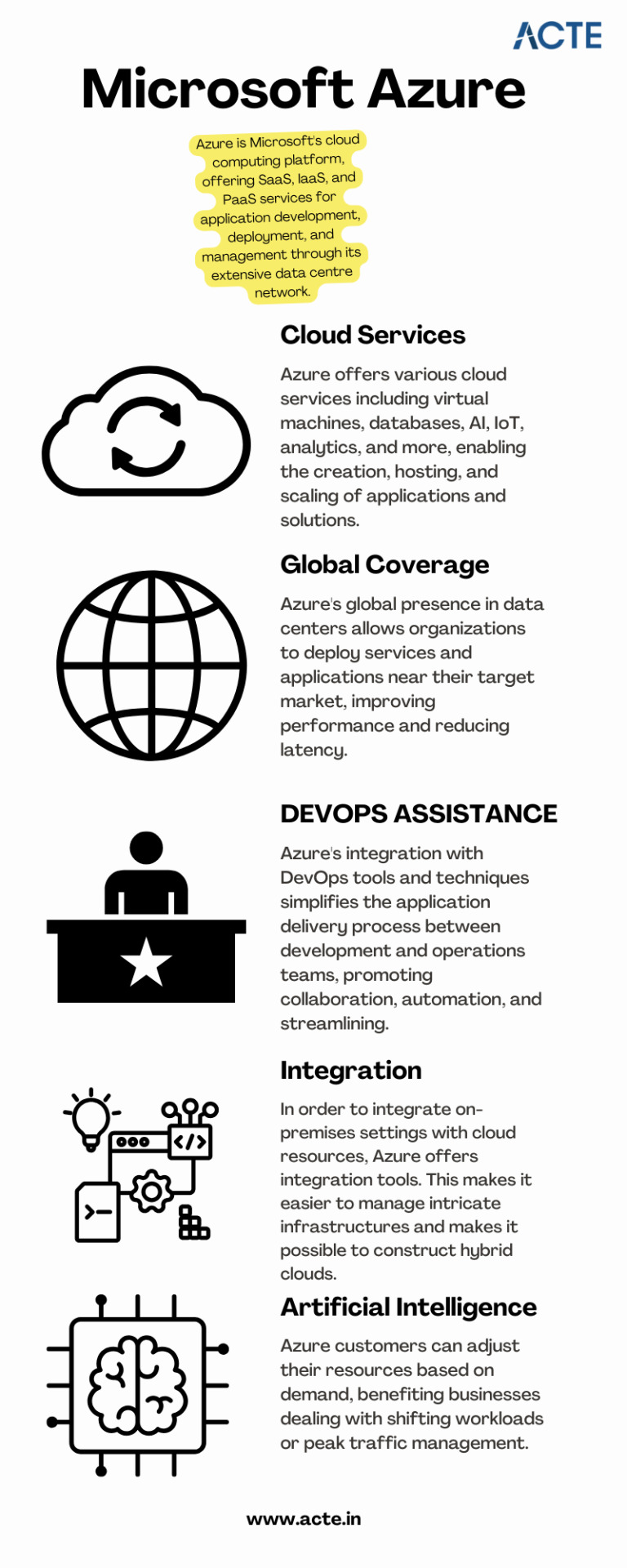
Cloud Computing and its Significance
Cloud computing has revolutionized the IT industry by providing on-demand access to a shared pool of computing resources over the internet. It eliminates the need for businesses to maintain physical hardware and infrastructure, reducing costs and improving scalability. Microsoft Azure embraces cloud computing principles to enable businesses to focus on innovation rather than infrastructure management.
Key Features and Benefits of Microsoft Azure
Scalability: Azure provides the flexibility to scale resources up or down based on workload demands, ensuring optimal performance and cost efficiency.
Vertical Scaling: Increase or decrease the size of resources (e.g., virtual machines) within Azure.
Horizontal Scaling: Expand or reduce the number of instances across Azure services to meet changing workload requirements.
Reliability and Availability: Microsoft Azure ensures high availability through its globally distributed data centers, redundant infrastructure, and automatic failover capabilities.
Service Level Agreements (SLAs): Guarantees high availability, with SLAs covering different services.
Availability Zones: Distributes resources across multiple data centers within a region to ensure fault tolerance.
Security and Compliance: Azure incorporates robust security measures, including encryption, identity and access management, threat detection, and regulatory compliance adherence.
Azure Security Center: Provides centralized security monitoring, threat detection, and compliance management.
Compliance Certifications: Azure complies with various industry-specific security standards and regulations.
Hybrid Capability: Azure seamlessly integrates with on-premises infrastructure, allowing businesses to extend their existing investments and create hybrid cloud environments.
Azure Stack: Enables organizations to build and run Azure services on their premises.
Virtual Network Connectivity: Establish secure connections between on-premises infrastructure and Azure services.
Cost Optimization: Azure provides cost-effective solutions, offering pricing models based on consumption, reserved instances, and cost management tools.
Azure Cost Management: Helps businesses track and optimize their cloud spending, providing insights and recommendations.
Azure Reserved Instances: Allows for significant cost savings by committing to long-term usage of specific Azure services.
Extensive Service Catalog: Azure offers a wide range of services and tools, including app services, AI and machine learning, Internet of Things (IoT), analytics, and more, empowering businesses to innovate and transform digitally.
Learning Path for Microsoft Azure
To master Microsoft Azure, tech enthusiasts can follow a structured learning path that covers the fundamental concepts, hands-on experience, and specialized skills required to work with Azure effectively. I advise looking at the ACTE Institute, which offers a comprehensive Microsoft Azure Course.

Foundational Knowledge
Familiarize yourself with cloud computing concepts, including Infrastructure as a Service (IaaS), Platform as a Service (PaaS), and Software as a Service (SaaS).
Understand the core components of Azure, such as Azure Resource Manager, Azure Virtual Machines, Azure Storage, and Azure Networking.
Explore Azure architecture and the various deployment models available.
Hands-on Experience
Create a free Azure account to access the Azure portal and start experimenting with the platform.
Practice creating and managing virtual machines, storage accounts, and networking resources within the Azure portal.
Deploy sample applications and services using Azure App Services, Azure Functions, and Azure Containers.
Certification and Specializations
Pursue Azure certifications to validate your expertise in Azure technologies. Microsoft offers role-based certifications, including Azure Administrator, Azure Developer, and Azure Solutions Architect.
Gain specialization in specific Azure services or domains, such as Azure AI Engineer, Azure Data Engineer, or Azure Security Engineer. These specializations demonstrate a deeper understanding of specific technologies and scenarios.
Best Practices for Azure Deployment and Management
Deploying and managing resources effectively in Microsoft Azure requires adherence to best practices to ensure optimal performance, security, and cost efficiency. Consider the following guidelines:
Resource Group and Azure Subscription Organization
Organize resources within logical resource groups to manage and govern them efficiently.
Leverage Azure Management Groups to establish hierarchical structures for managing multiple subscriptions.
Security and Compliance Considerations
Implement robust identity and access management mechanisms, such as Azure Active Directory.
Enable encryption at rest and in transit to protect data stored in Azure services.
Regularly monitor and audit Azure resources for security vulnerabilities.
Ensure compliance with industry-specific standards, such as ISO 27001, HIPAA, or GDPR.
Scalability and Performance Optimization
Design applications to take advantage of Azure’s scalability features, such as autoscaling and load balancing.
Leverage Azure CDN (Content Delivery Network) for efficient content delivery and improved performance worldwide.
Optimize resource configurations based on workload patterns and requirements.
Monitoring and Alerting
Utilize Azure Monitor and Azure Log Analytics to gain insights into the performance and health of Azure resources.
Configure alert rules to notify you about critical events or performance thresholds.
Backup and Disaster Recovery
Implement appropriate backup strategies and disaster recovery plans for essential data and applications.
Leverage Azure Site Recovery to replicate and recover workloads in case of outages.
Mastering Microsoft Azure empowers tech enthusiasts to harness the full potential of cloud computing and revolutionize their organizations. By understanding the core concepts, leveraging hands-on practice, and adopting best practices for deployment and management, individuals become equipped to drive innovation, enhance security, and optimize costs in a rapidly evolving digital landscape. Microsoft Azure’s comprehensive service catalog ensures businesses have the tools they need to stay ahead and thrive in the digital era. So, embrace the power of Azure and embark on a journey toward success in the ever-expanding world of information technology.
#microsoft azure#cloud computing#cloud services#data storage#tech#information technology#information security
6 notes
·
View notes